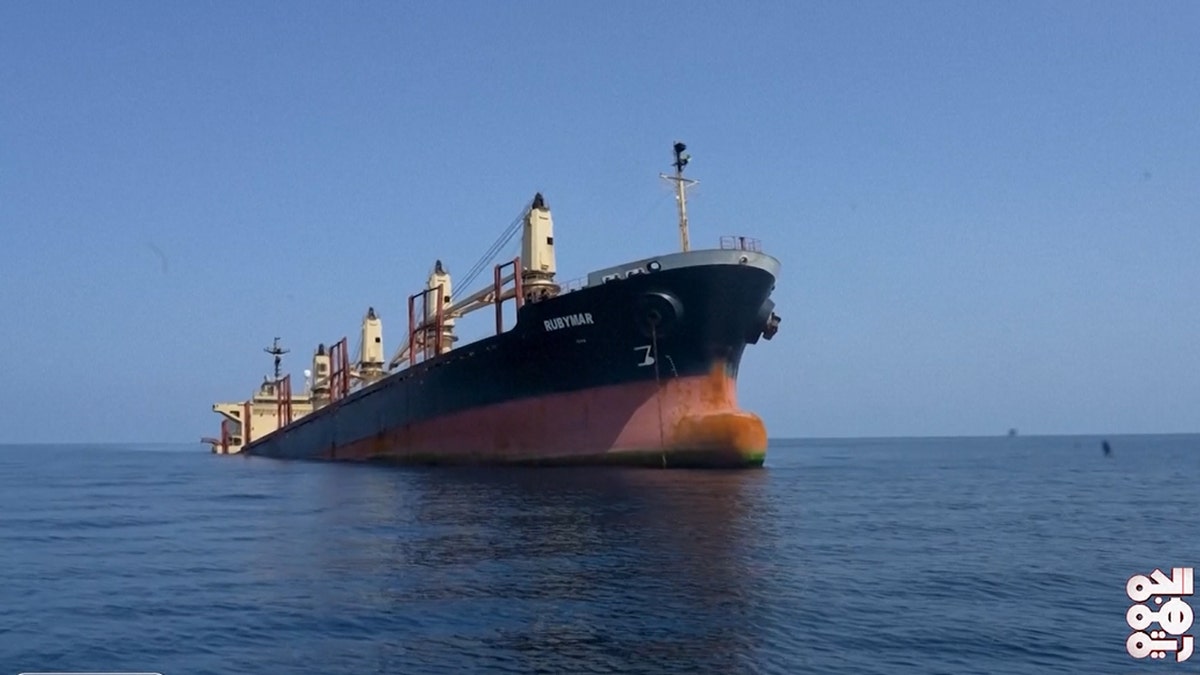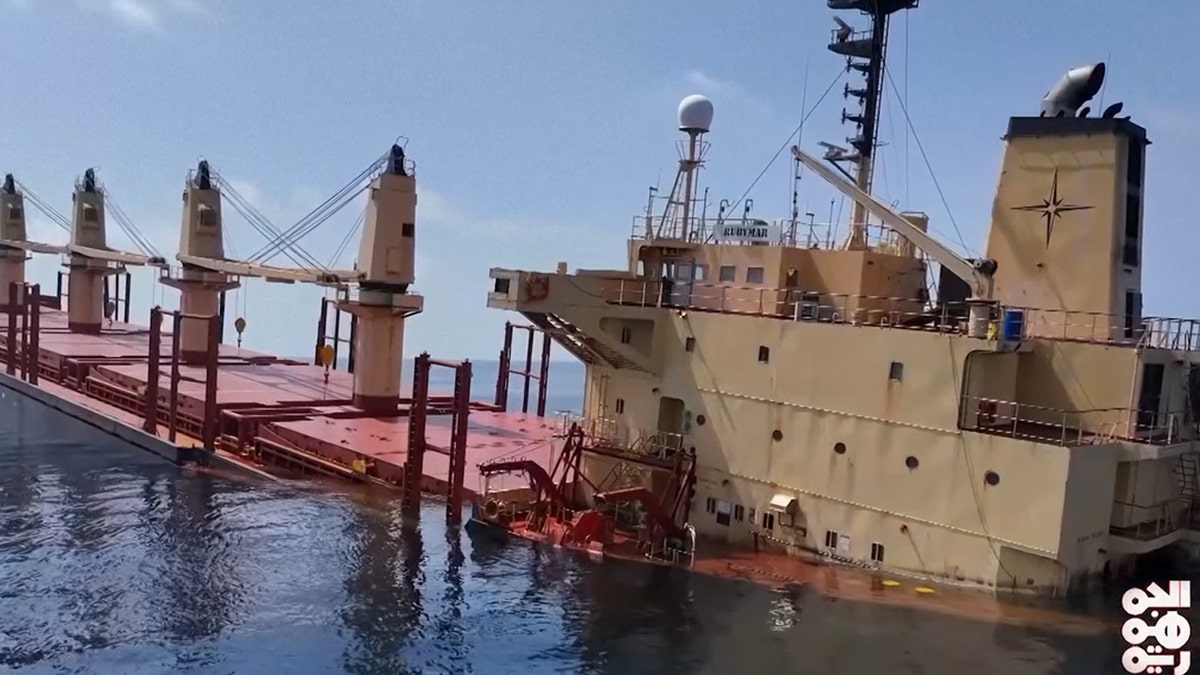UK-owned ship struck by Houthis sinks, first vessel lost during war
A U.K.-owned cargo ship that was struck by the Iran-backed Houthi rebels nearly two weeks ago has finally sunk, making it the first vessel to be lost since the onset of the Israel-Hamas war.
The ship, a Belize-flagged bulk carrier called the “MV Rubymar,” was attacked by two anti-ship missiles launched by the Houthis on Feb. 18, one of which hit and caused severe damage, U.S. Central Command (CENTCOM) reported at the time.
Two nearby ships responded to the incident and safely evacuated all 24 crew members but the Rubymar was left dead in the water, slowly taking on water as its cargo, fertilizer and fuel, spilled into the sea. CENTCOM called it an “environmental disaster.”
US FORCES CARRY OUT MORE STRIKES AGAINST ANTI-SHIP CRUISE MISSILES, DRONE IN RED SEA
Incredible aerial footage taken on Wednesday showed the partially submerged vessel near the Bab el-Mandeb Strait, a crucial waterway linking the Red Sea and the Gulf of Aden. It was drifting northward while an oil slick stretching at least 18 miles could also be seen.
Plans to tow the ship to a safe port never materialized.
On Saturday afternoon, the British military’s maritime trade operations center, which watches over Mideast waterways, separately acknowledged the Rubymar’s sinking. The vessel is owned Golden Adventure Shipping SA of Southampton in the U.K.
Yemen’s internationally recognized government, as well as a regional military official, confirmed the ship sank.
Satellite pictures analyzed by The Associated Press from Planet Labs PBC showed smaller boats alongside the Rubymar on Wednesday. It wasn’t immediately clear whose vessels those were. The images showed the Rubymar’s stern sinking into the Red Sea but still afloat, mirroring earlier video taken of the vessel.
Then, on Friday, the private security firm Ambrey separately reported about a mysterious incident involving the Rubymar where a number of Yemenis were reportedly harmed during a security incident. It did not elaborate on what that incident involved and no party involved in Yemen’s yearslong war claimed any new attack on the vessel, the Associated Press reports.

STAMPEDE, GUNFIRE AT GAZA HUMANITARIAN AID DELIVERY KILLS OVER 100, REPORTS SAY
A satellite image taken Friday by Maxar Technologies showed new blast damage on the Rubymar not previously seen, with no other vessels around it. It sank soon after.
The Houthis, a Zaydi Shiite group, seized Yemen’s capital in 2014 and have battled a Saudi-led coalition since 2015. Their Zaydi people ran a 1,000-year kingdom in Yemen up until 1962.
Freight going through the Suez Canal has plunged since Iran-backed Houthi militants began attacking vessels in the Red Sea as a show of support for Palestinians in the Israel-Hamas war which began following the Oct. 7 terrorist attack on Israel that killed 1,200 people.
The Suez Canal is a critical shipping lane, given that it offers vessels a direct route between the North Atlantic and northern Indian oceans via the Mediterranean Sea and the Red Sea. Those vessels have included at least one with cargo bound for Iran, the Houthis’ main benefactor and an aid ship later bound for Houthi-controlled territory while an American drone worth tens of millions of dollars was also shot down.
The attacks led to U.S. and British forces launching a series of proportionate strikes on Houthi targets in Yemen.
On Thursday, CENTCOM forces conducted two self-defense strikes against six mobile anti-ship cruise missiles that were prepared to launch towards the Red Sea. Earlier in the evening, CENTCOM forces shot down a drone over the southern Red Sea in self-defense, the agency said.

The Houthis insist their attacks will continue until Israel stops its combat operations in the Gaza Strip, which have enraged the wider Arab world and seen the Houthis gain international recognition.
However, there has been a slowdown in attacks in recent days. The reason for that remains unclear.
Fox News’ Bradford Bens and the Associated Press contributed to this report.
Read the full article Here


